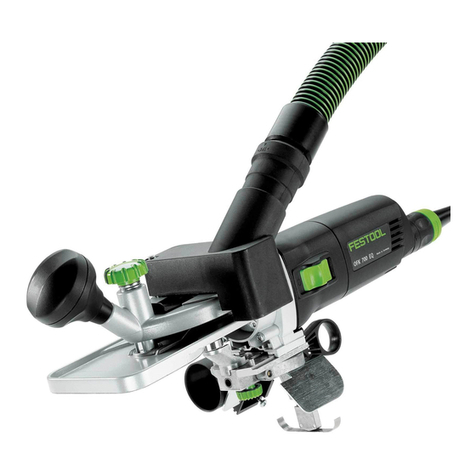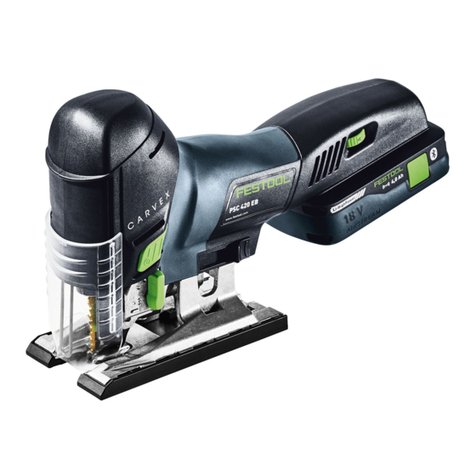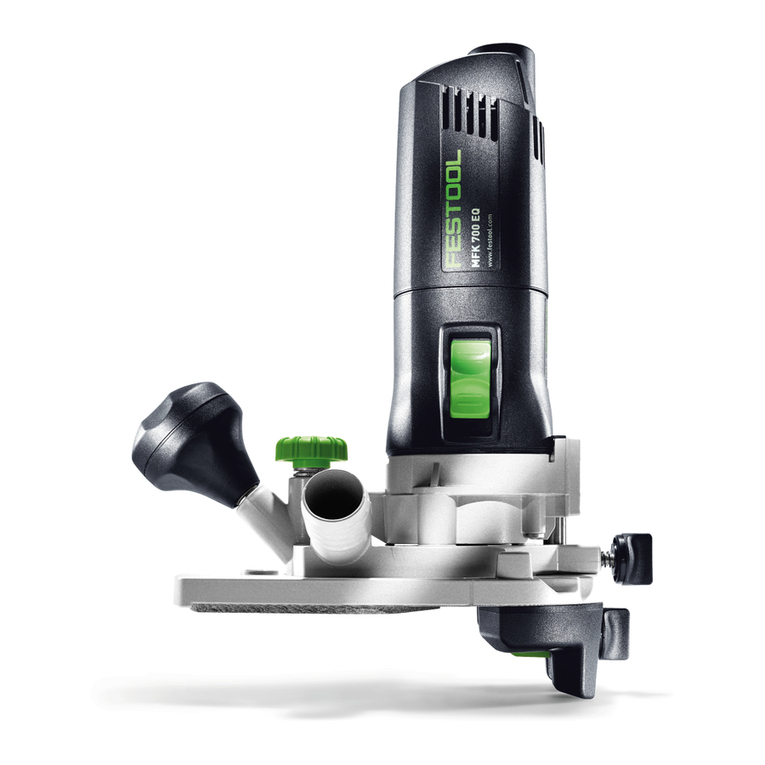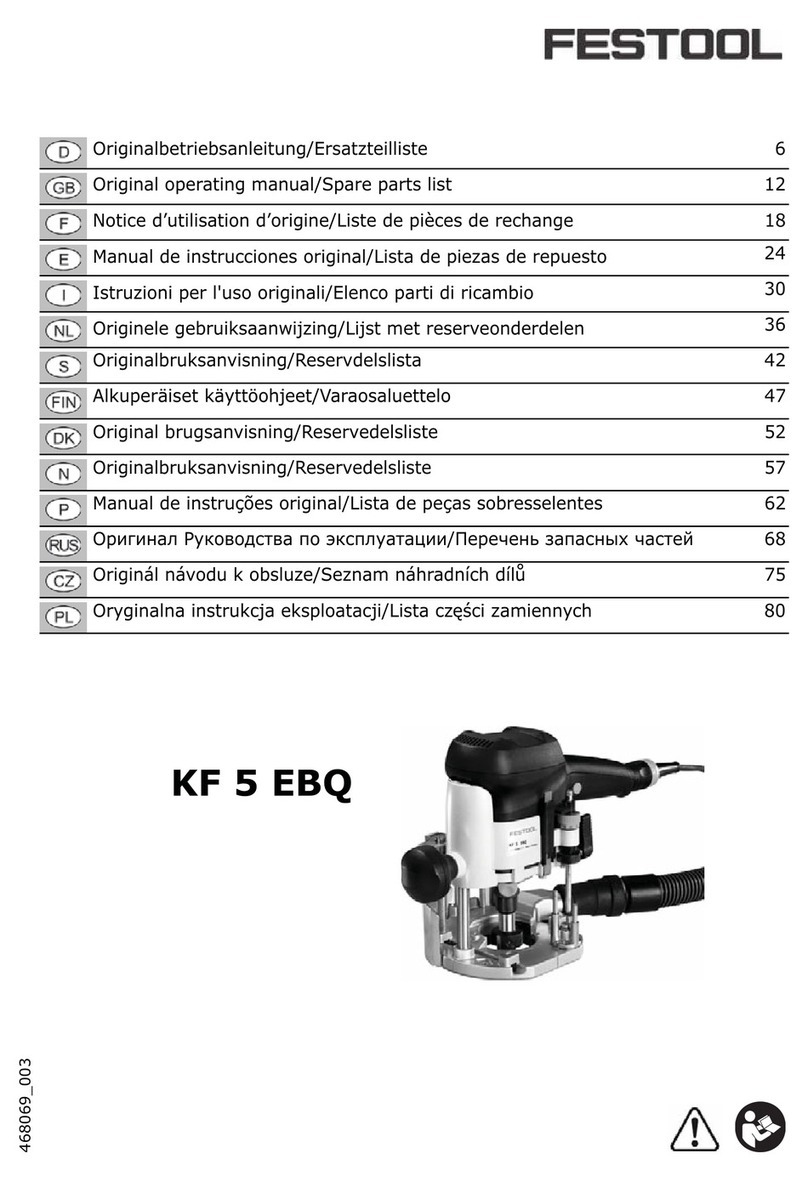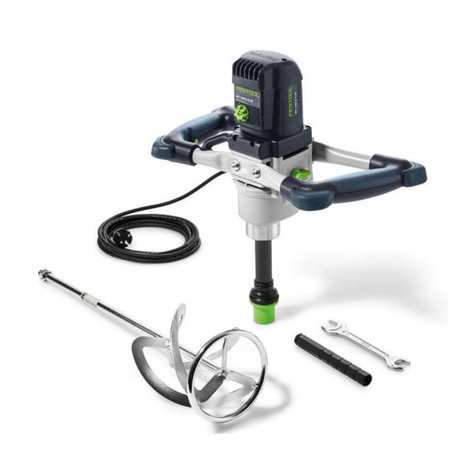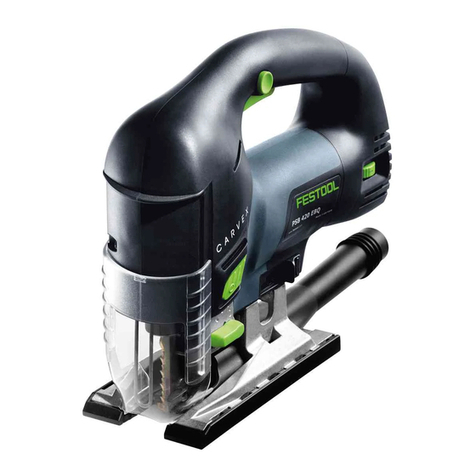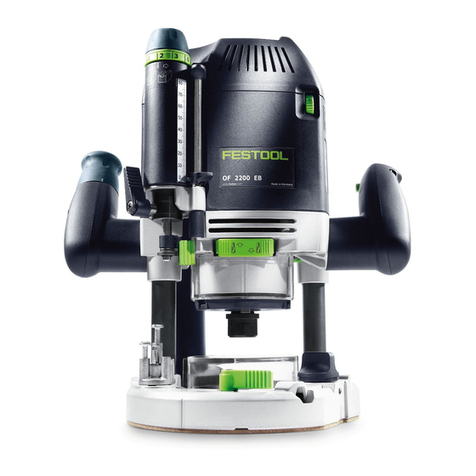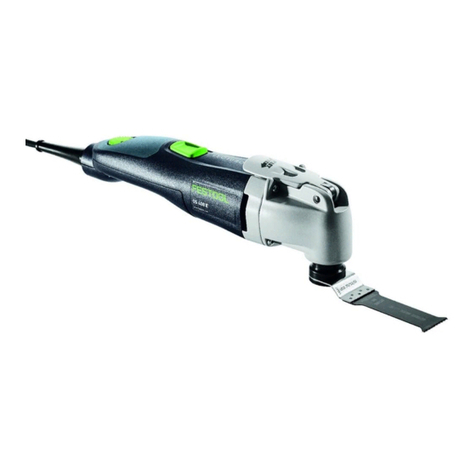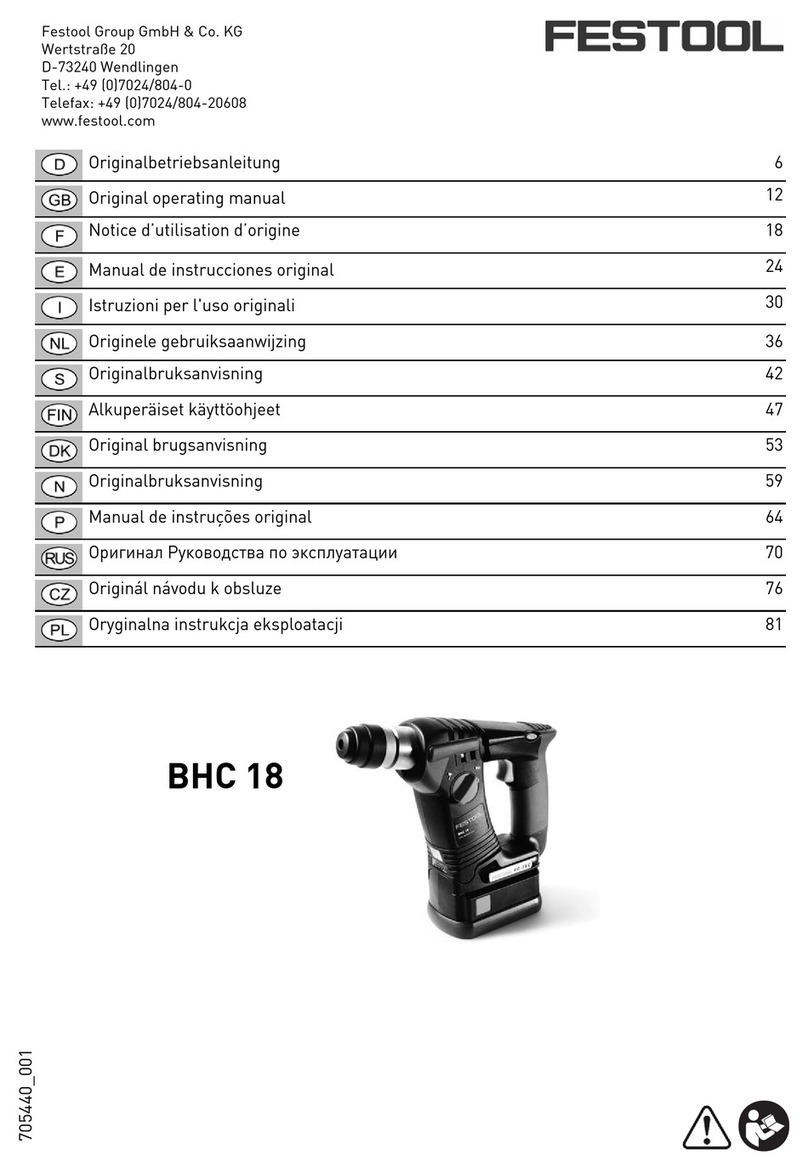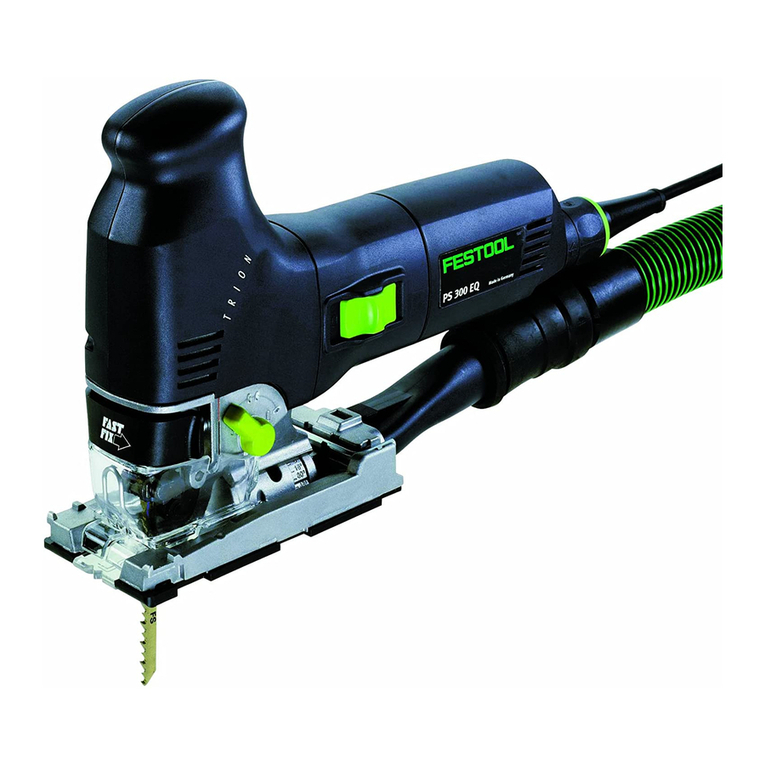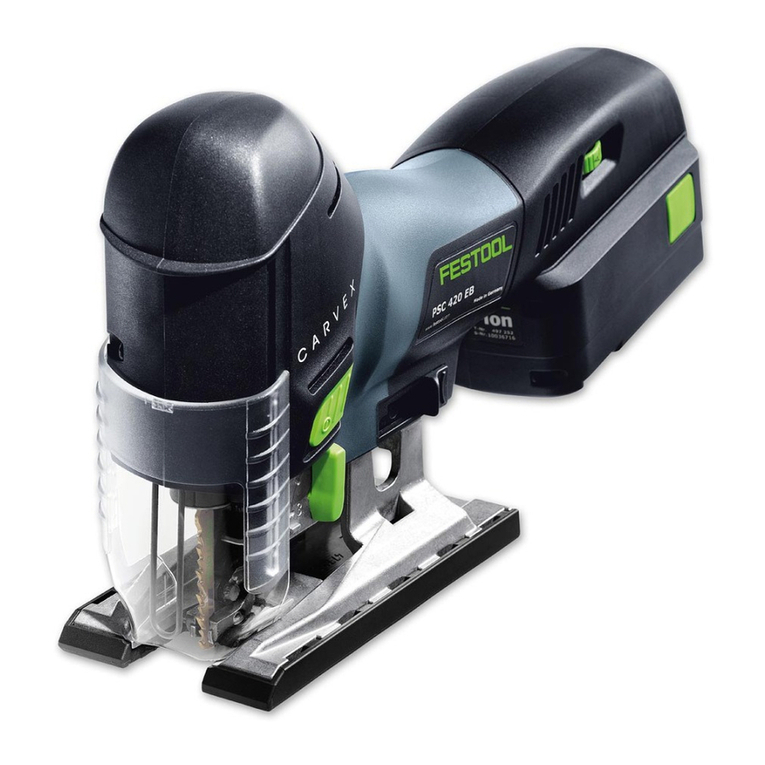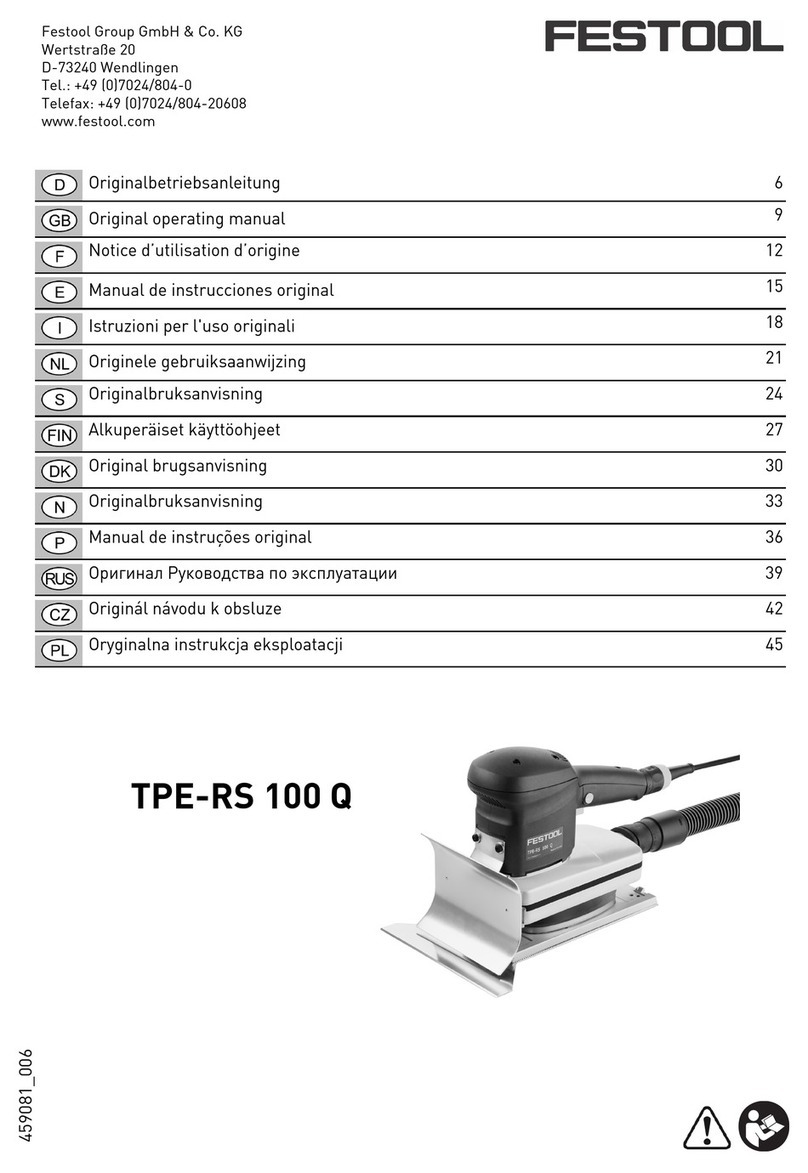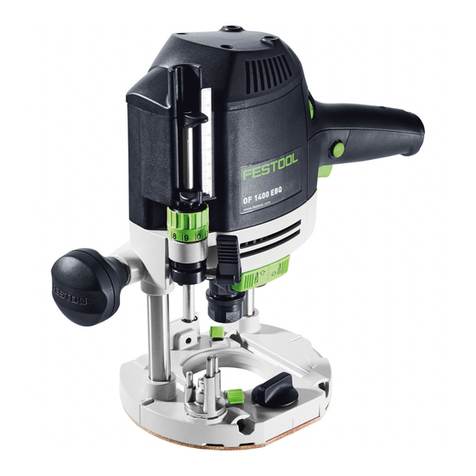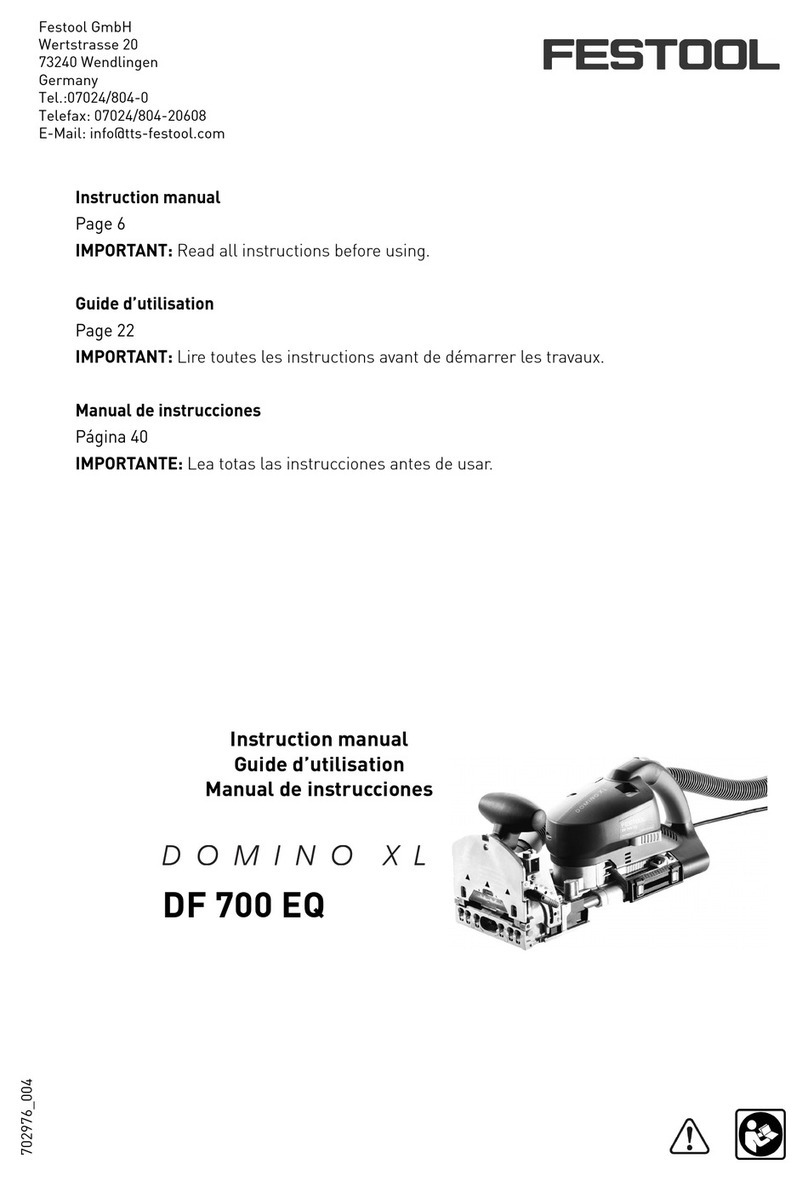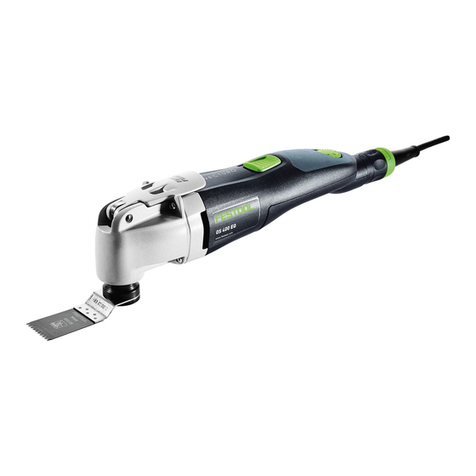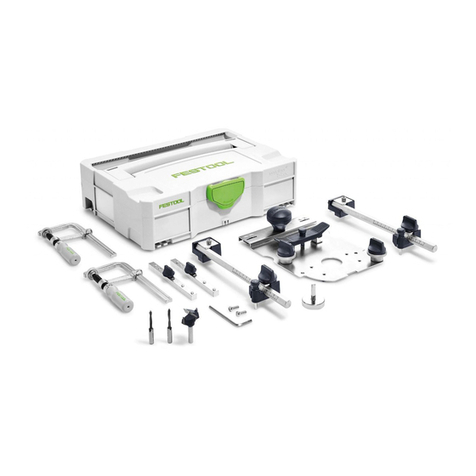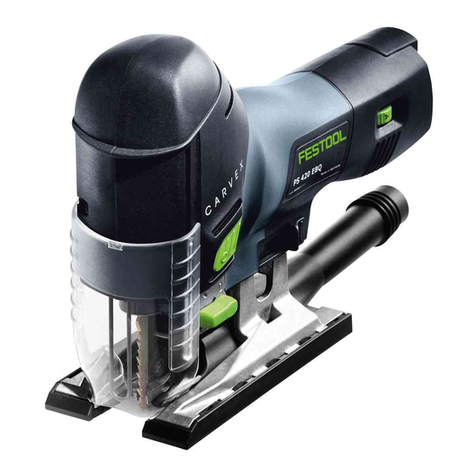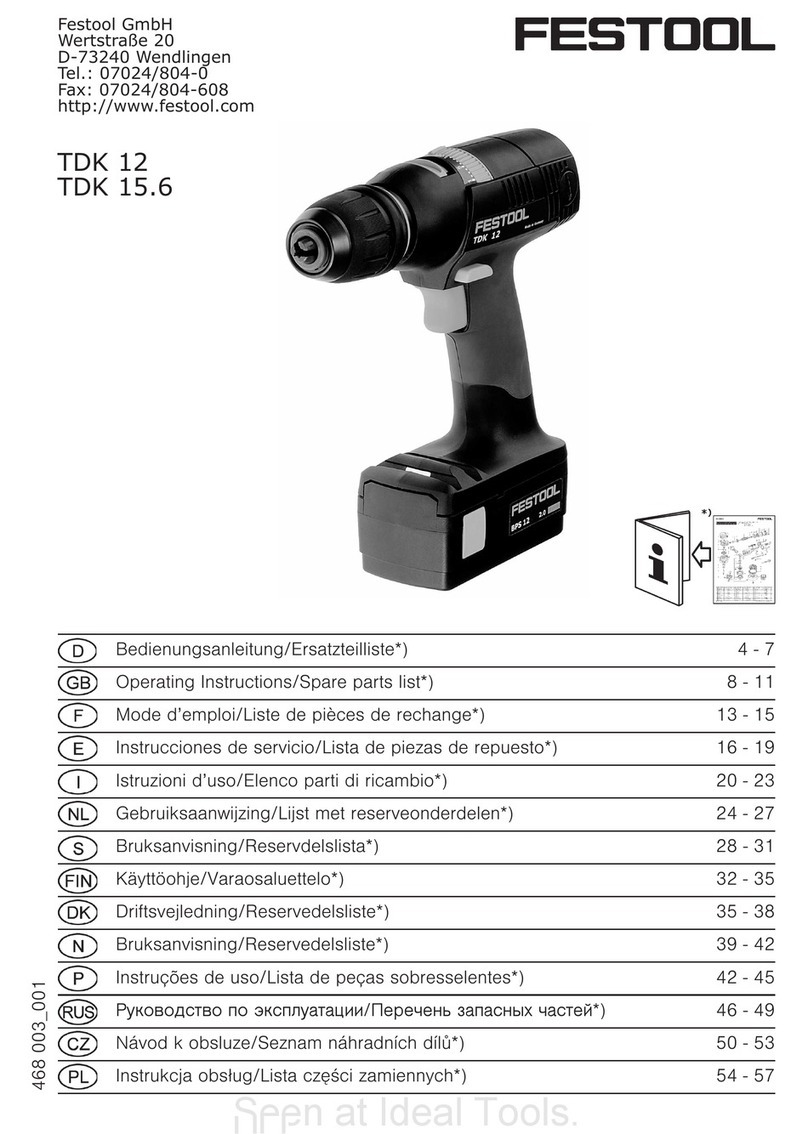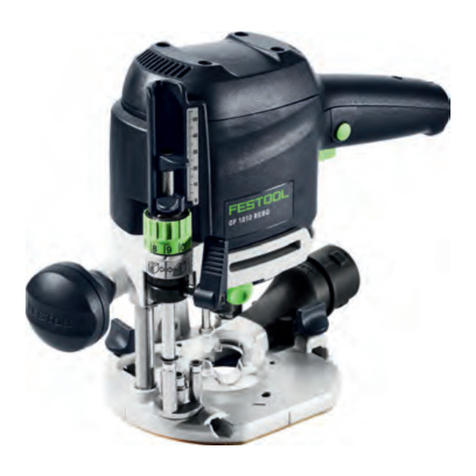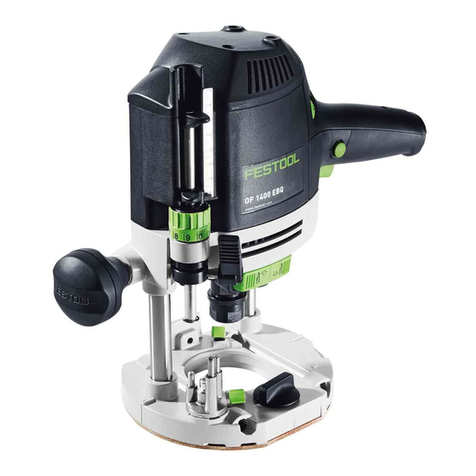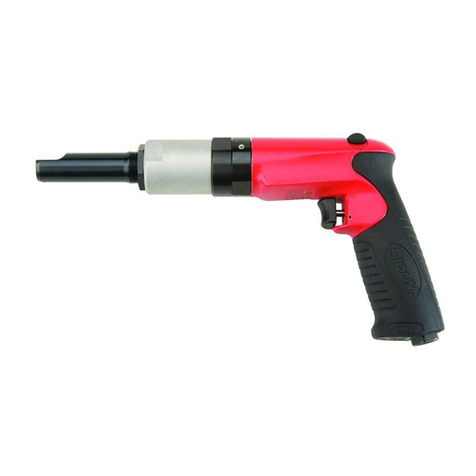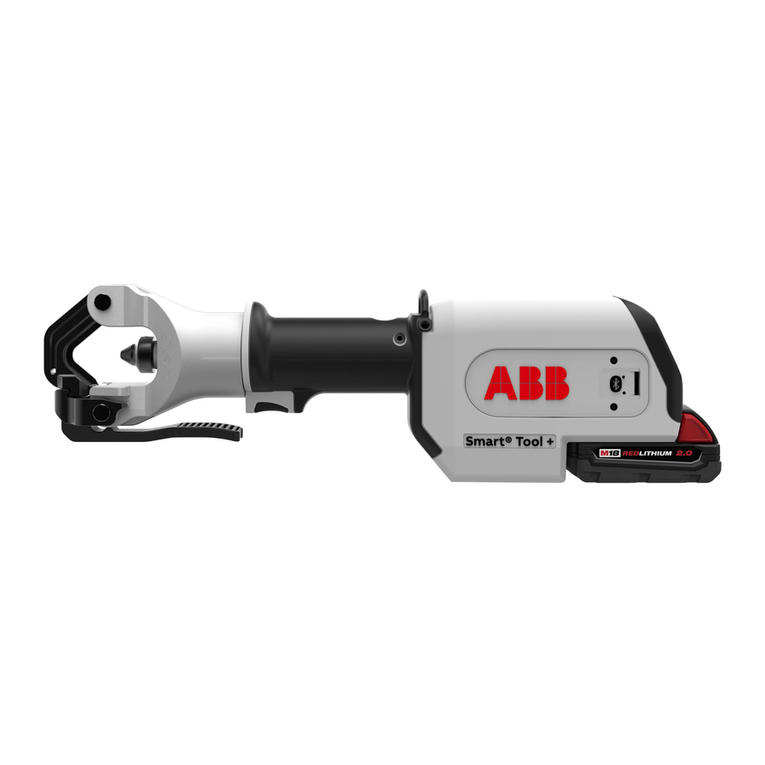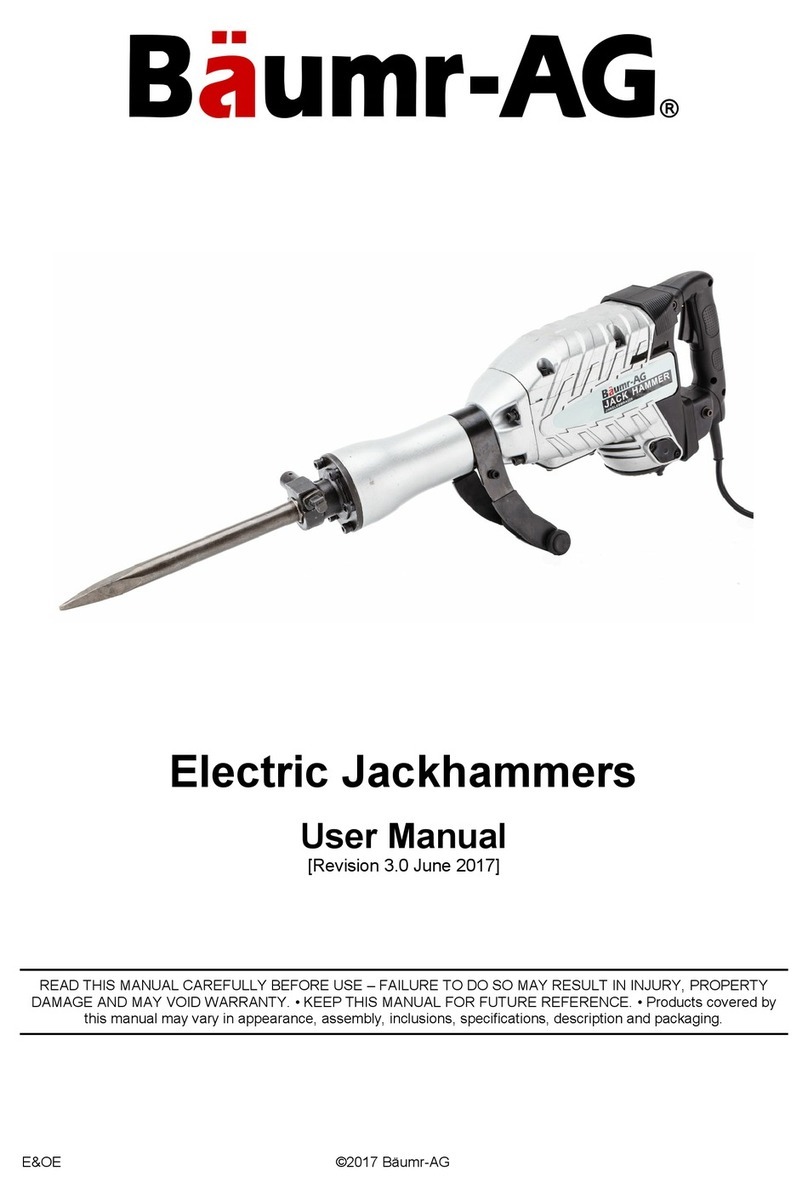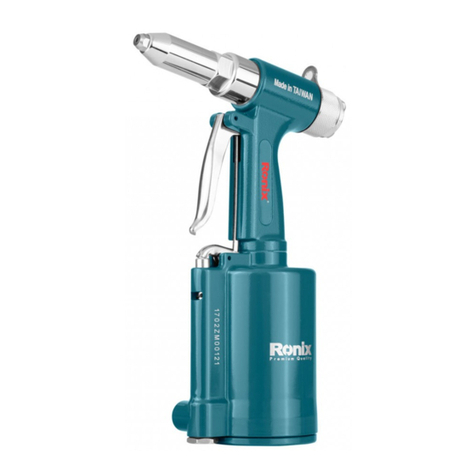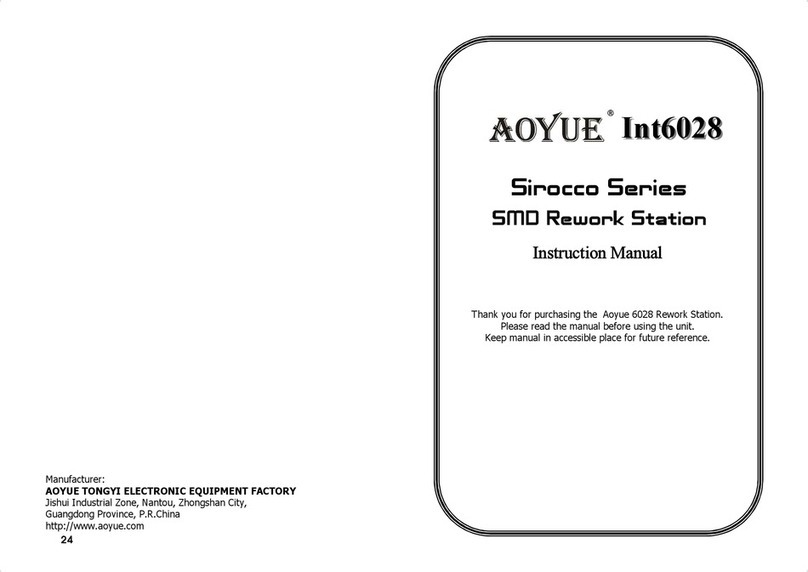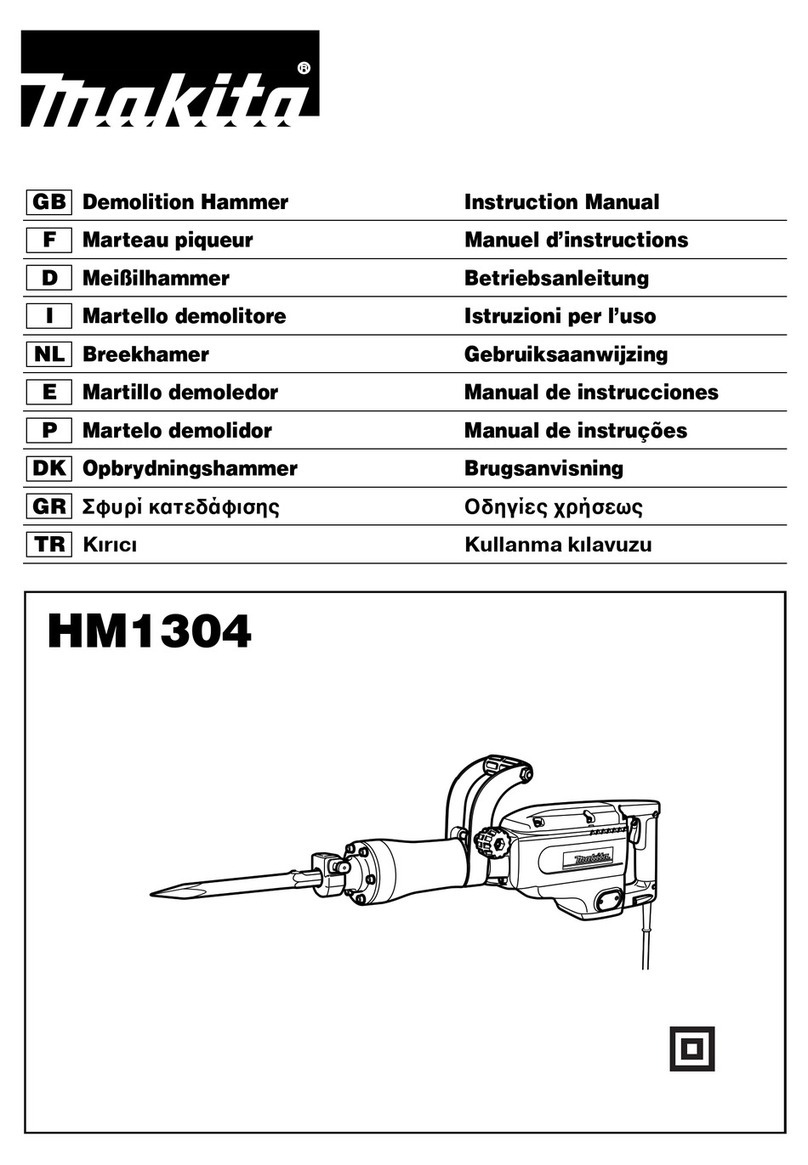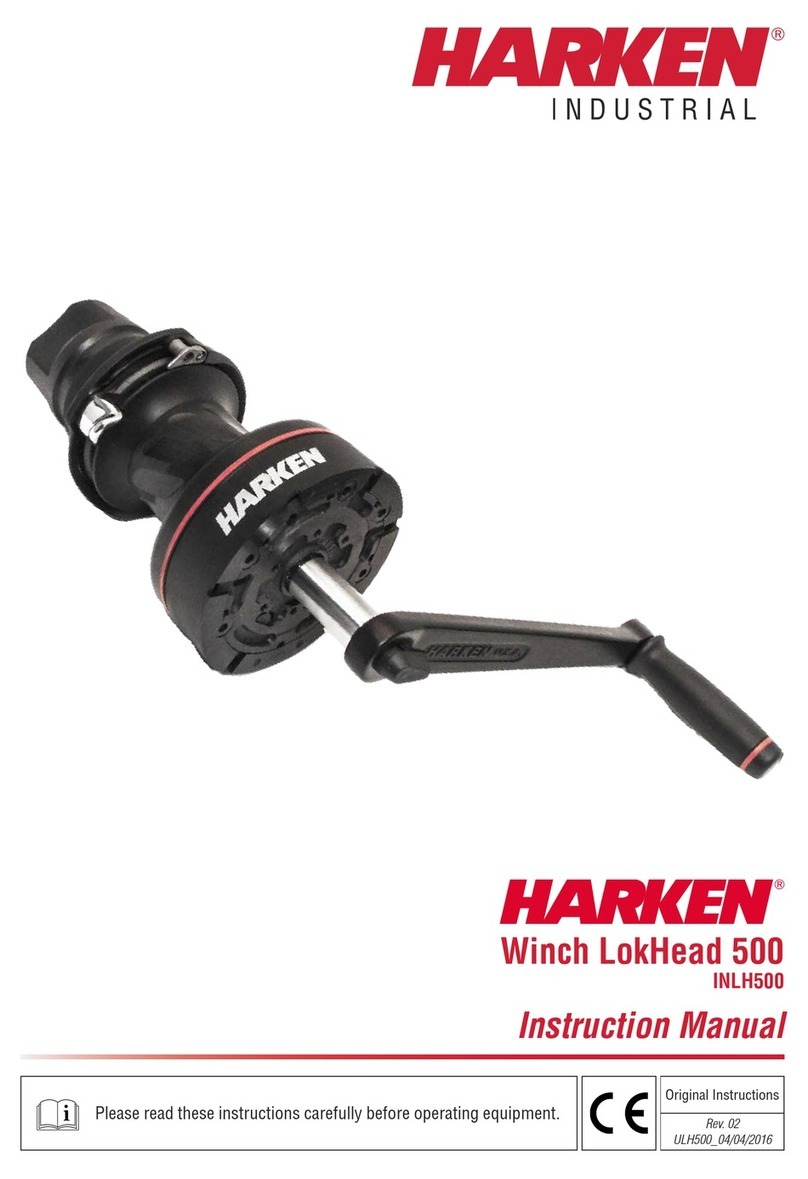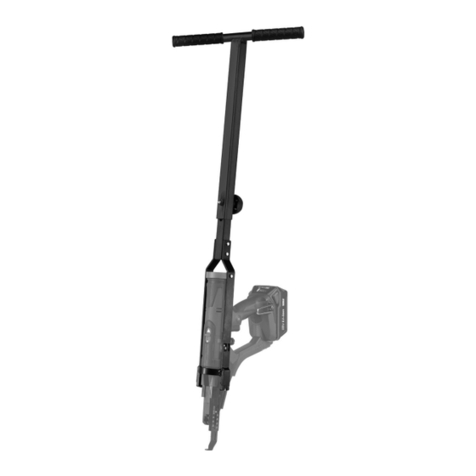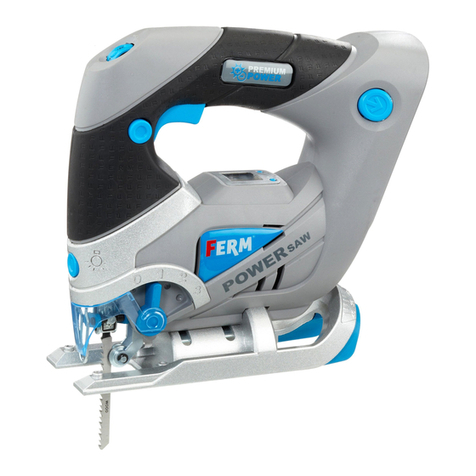12
Attach the guide rail to the workpiece as fol-
lows
- The guide rail must extend at least 150 mm
beyond either end of the workpiece.
- Align the guide rail using the gauge mark (3.2).
The front edge (3.4) shows the centre of the
groove.
- Secure both sides of the guide rail to the work-
piece using two clamps (3.3).
Metalworking
The following precautions are to be taken
when processing metals for safety rea-
sons:
- Pre-connect a residual current circuit-breaker
(FI, PRCD).
- Connect the machine to a suitable dust extrac-
tor.
- Clean tool regularly of dust accumulations in
the motor housing.
Wear protective goggles.
Route the groove as follows
- Ensure that the sensor and depth stop are cor-
rectly set for the workpiece thickness.
- Place the machine on the guide rail in front of
the edge of the workpiece. The mark (4.7) shows
the centre axis of the router.
- Switch on the machine.
- Move the machine downwards slowly until the
stop plate (4.4) is resting on the depth stop
(4.5).
- Move the machine forward along the guide rail
in order to route the groove. The gauge mark
(4.6) shows the centre of the groove.
- When the groove is complete, switch the ma-
chine off and swivel it upwards.
Plunge-cut
In the case of plunge cuts, a guide limiter
(6.1) must be attached behind the ma-
chine because of the danger of kickbacks.
Position the machine on the guide limiter,
hold securely with both hands and move
it downwards very slowly.
7 Maintenance and care
Always remove the power supply plug
from the socket before carrying out any
work on the machine.
All maintenance and repair work which
requires the motor casing to be opened
may only be carried out by an authorised
service centre.
Always keep the machine and the ventilation slots
clean.
The tool is fitted with special motor brushes with
an automatic cut-out. When the brushes become
worn the power supply is shut off automatically
and the tool comes to a standstill.
A brake disc (1.3) decelerates the sensor to pre-
vent it from being accelerated by the rotating
tool and leaving marks behind on the workpiece.
Replace the brake disc if its power decreases.
8 Accessories, tools
For your own safety, use only original
Festool accessories and spare parts.
The accessory and tool order number can be found
in the Festool catalogue or on the Internet under
“www.festool.com”.
9 Disposal
Do not throw the power tool in your household
waste! Dispose of the machine, accessories and
packaging at an environmentally-responsible
recycling centre! Observe the valid national regu-
lations.
EU only: European Directive 2002/96/EC stipulate
that used electric power tools must be collected
separately and disposed of at an environmentally
responsible recycling centre.
10 Warranty
For our tools, we give warranty for material and
production defects in accordance with the locally
applicable legal provisions, but in any case for at
least 12 months. Within the EU member states,
the warranty period is 24 months (verification
through invoice or delivery note).
Damage caused by, in particular, natural wear,
overloading, incorrect handling, or damage caused
by the operator, or damage caused through use
of the equipment contrary that specified in the
Operating Instructions, or damage which was
known at the time of purchase, is not covered by
the warranty.
Furthermore, damage caused by the use of non-
original Festool accessories and consumable
material (e.g. sanding pads) is also excluded.
Complaints can only be recognised if the tool is re-
turned while still assembled to the supplier or an
authorised Festool Customer Service workshop.
Keep the Operating Instructions, Safety Instruc-

